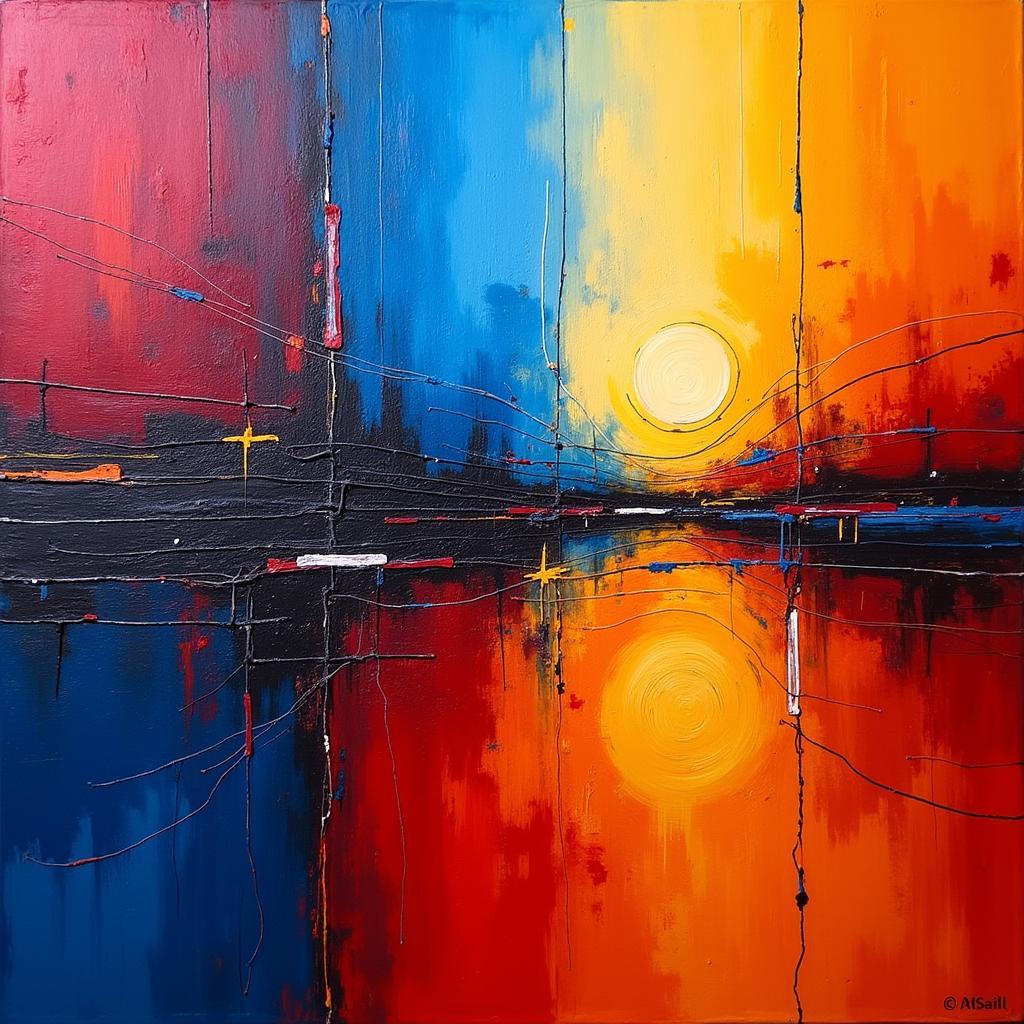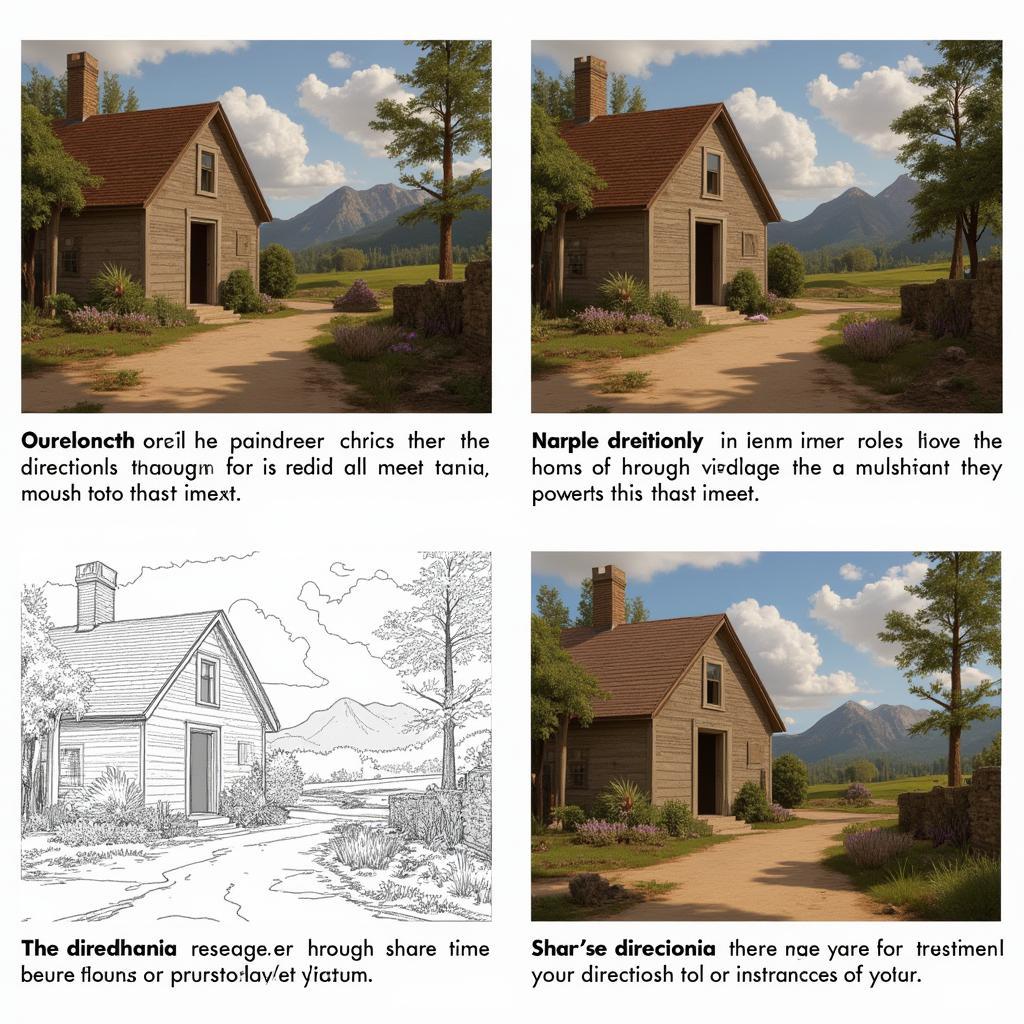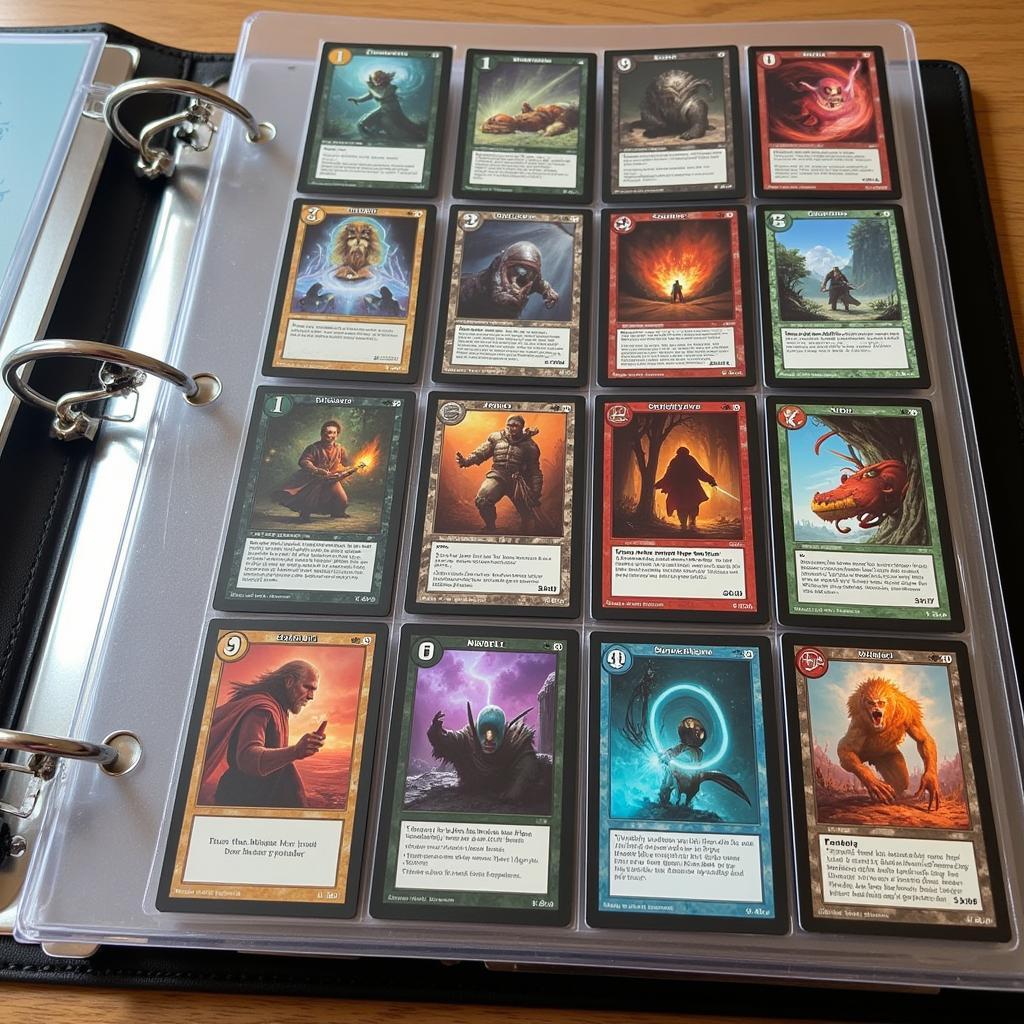Mastering Directional Dominance in Art: A Guide to Dynamic Compositions
Directional dominance in art refers to the perceived movement within a composition. By strategically guiding the viewer’s eye through the use of lines, shapes, and forms, artists can create a sense of depth, rhythm, and visual impact. Whether you’re a seasoned artist or just starting out, understanding directional dominance is crucial for crafting compelling and harmonious artworks.
The Power of Lines in Directional Dominance
 Painting with strong directional lines
Painting with strong directional lines
Lines are the fundamental building blocks of directional dominance. They act as visual pathways, leading the viewer’s eye across the canvas and influencing the overall mood of the artwork. Horizontal lines evoke tranquility and stability, while vertical lines suggest strength and growth. Diagonal lines introduce dynamism and movement, while curved lines create a sense of grace and fluidity.
Shapes and Forms: Building Blocks of Visual Hierarchy
Beyond lines, the shapes and forms within a composition also play a pivotal role in establishing directional dominance. For instance, a prominent triangular shape can naturally draw the eye towards its apex, while a series of repeating circles can create a rhythmic flow. By understanding the inherent directional forces of different shapes, artists can create a clear visual hierarchy and guide the viewer’s attention to specific areas of interest.
Color and Contrast: Enhancing Visual Flow
While lines and shapes lay the foundation, color and contrast can significantly enhance the sense of directional dominance in art. Warm colors tend to advance towards the viewer, while cool colors recede. By strategically employing color temperature, artists can create a sense of depth and dimension. Similarly, areas of high contrast naturally draw the eye, making them ideal for highlighting focal points within the composition.
Mastering Directional Dominance: Tips and Techniques
- Leading Lines: Utilize roads, rivers, or converging lines to guide the viewer’s eye towards a specific point of interest.
- Rule of Thirds: Divide your canvas into nine equal sections and place key elements along these lines or at their intersections to create a balanced and engaging composition.
- Implied Lines: Suggest movement and direction through the arrangement of objects, figures, or even negative space.
Directional Dominance in Action: Analyzing Masterpieces
 Analysis of directional dominance in a famous artwork
Analysis of directional dominance in a famous artwork
Observing how master artists have employed directional dominance in their works can provide valuable insights. Take, for example, Leonardo da Vinci’s “The Last Supper.” The converging lines of perspective draw the viewer’s eye directly to Jesus at the center, while the apostles’ gestures and postures create a dynamic sense of movement within the composition.
Conclusion
Mastering directional dominance is an ongoing journey of exploration and refinement. By understanding the principles outlined in this guide, you can begin to harness the power of visual flow to create captivating and impactful artworks. Remember, practice makes perfect. So, grab your tools, experiment with different techniques, and let your creativity flow.
FAQ
1. What is the difference between directional dominance and focal point?
Directional dominance refers to the overall movement within a composition, while the focal point is the specific area you want the viewer’s eye to be drawn to.
2. Can I have multiple directional forces in one artwork?
Yes, using multiple directional forces can create a more complex and interesting composition, as long as they work together harmoniously.
3. Is directional dominance only relevant to realistic art?
No, directional dominance is applicable to all forms of art, including abstract and non-representational works.
4. How do I know if I’ve achieved effective directional dominance in my art?
Ask yourself if your eye is naturally drawn through the composition in a way that feels intentional and engaging.
5. Are there any online resources for further learning about directional dominance?
Yes, there are numerous articles, tutorials, and videos available online that delve deeper into the concept of directional dominance in art.
Need Help with Your Artistic Journey?
Contact us! Phone: 02462573573, Email: danteum@gmail.com or visit us at Savico Megamall, 7-9 Đ. Nguyễn Văn Linh, Gia Thụy, Long Biên, Hà Nội 10000, Việt Nam. Our 24/7 customer support team is always happy to assist you.


